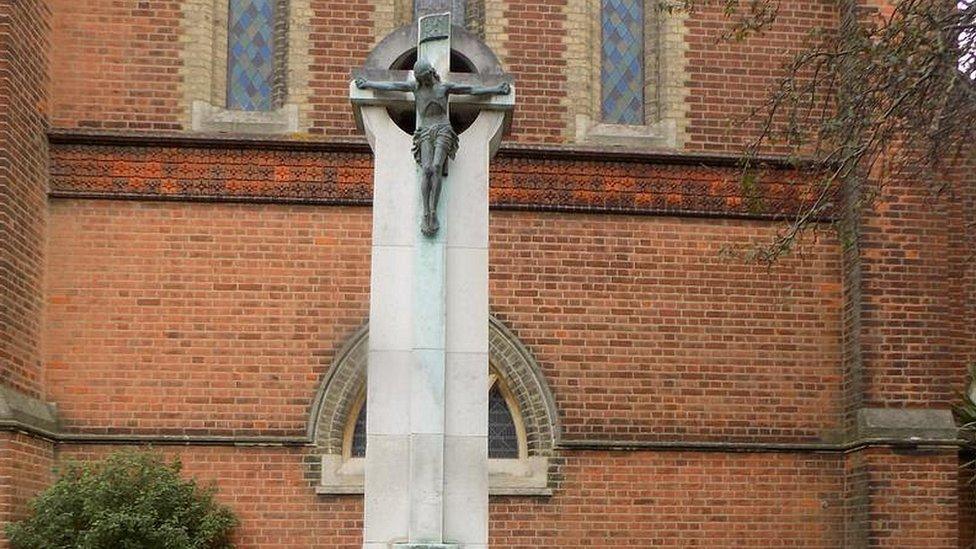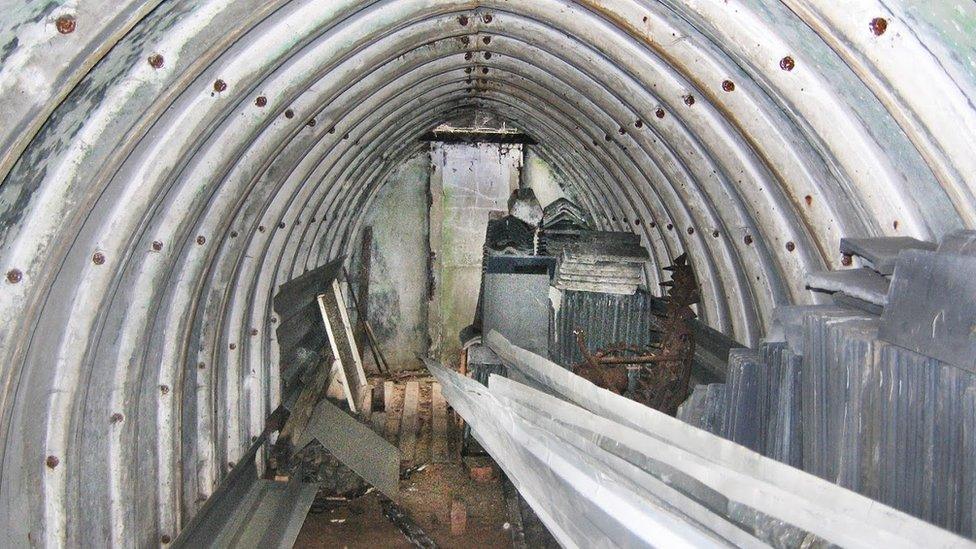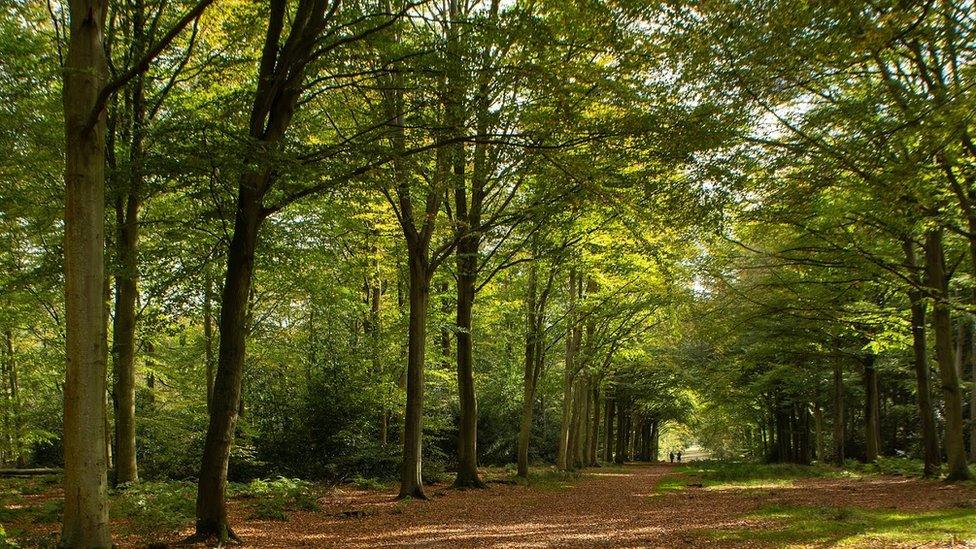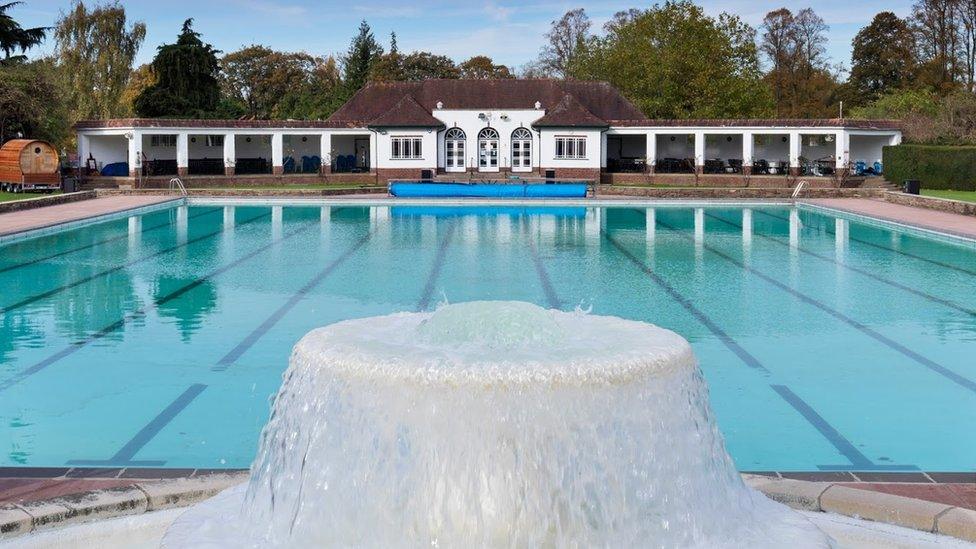Shelter and memorial listed to mark VE Day anniversary
- Published

The tower over the bunker in Hucknall is believed to be the only surviving example
A "unique" bunker and civilian war memorial have been listed for the 75th anniversary of World War Two's end.
The shelter, with a tower to watch for enemy paratroopers, is near an ex-RAF airfield in Hucknall, Nottinghamshire.
The memorial - a stone cross - near St Luke's church in Bromley, south London, is in an area heavily bombed in the war.
Historic England said Grade II listing would help "ensure the rich history of these iconic sites is not forgotten".

The cross in Bromley was set up after WW1 but rededicated after WW2 to remember civilian deaths
In Nottinghamshire, the bunker, officially known as the Battle Headquarters, has a three-storey brick tower - believed to be the only surviving example - over a shelter connected to the rest of the airfield.
It was built in 1940 at a time of feverish speculation the Germans could invade at any moment.
Built on high ground, it was intended to give clear views of possible landing areas for enemy parachute troops and allow for co-ordinated counter attacks.
The memorial at St Luke's was built after WW1 but Bromley suffered many enemy bomb attacks in WW2 because of both its position on the outskirts of London and close proximity to the RAF base at Biggin Hill in Kent.

The Nottinghamshire bunker was originally a command post for the area
The biggest air raid was in 1941 when 198 bombs were dropped in the area, killing 74 civilians and destroying many buildings including Bromley Parish Church.
Two other sites, the Obelisk at Orange Grove in Bath and Felbrigg Hall Gardens in Norfolk, have had their existing listings updated to include new information about their connection with the war.
The Obelisk, though itself much older, came to mark the special relationship between Bath and the occupied Dutch city of Alkmaar, a connection that has continued to this day.

The Felbrigg Hall's "Victory V" avenues look like an enormous V from the air
Felbrigg Hall's grounds boast two 350m (380 yards) avenues of beech trees planted in the shape of a V, planted after the war by the last private owner to commemorate peace and his brother who had died in 1941 on active service.
Duncan Wilson, chief executive of Historic England, said: "The surviving physical evidence of the Second World War is all around us, but is often unrecognised.
"From the Battle Headquarters at RAF Hucknall Airfield to the memorial at St Luke's Church in Bromley; from aircraft hangars, former air raid shelters, barracks and hospitals, to the thousands of homes that sheltered evacuees, we must ensure that the rich history of these iconic sites is not forgotten."

Follow BBC East Midlands on Facebook, external, Twitter, external, or Instagram, external. Send your story ideas to eastmidsnews@bbc.co.uk, external.
- Published4 May 2020

- Published20 December 2019
